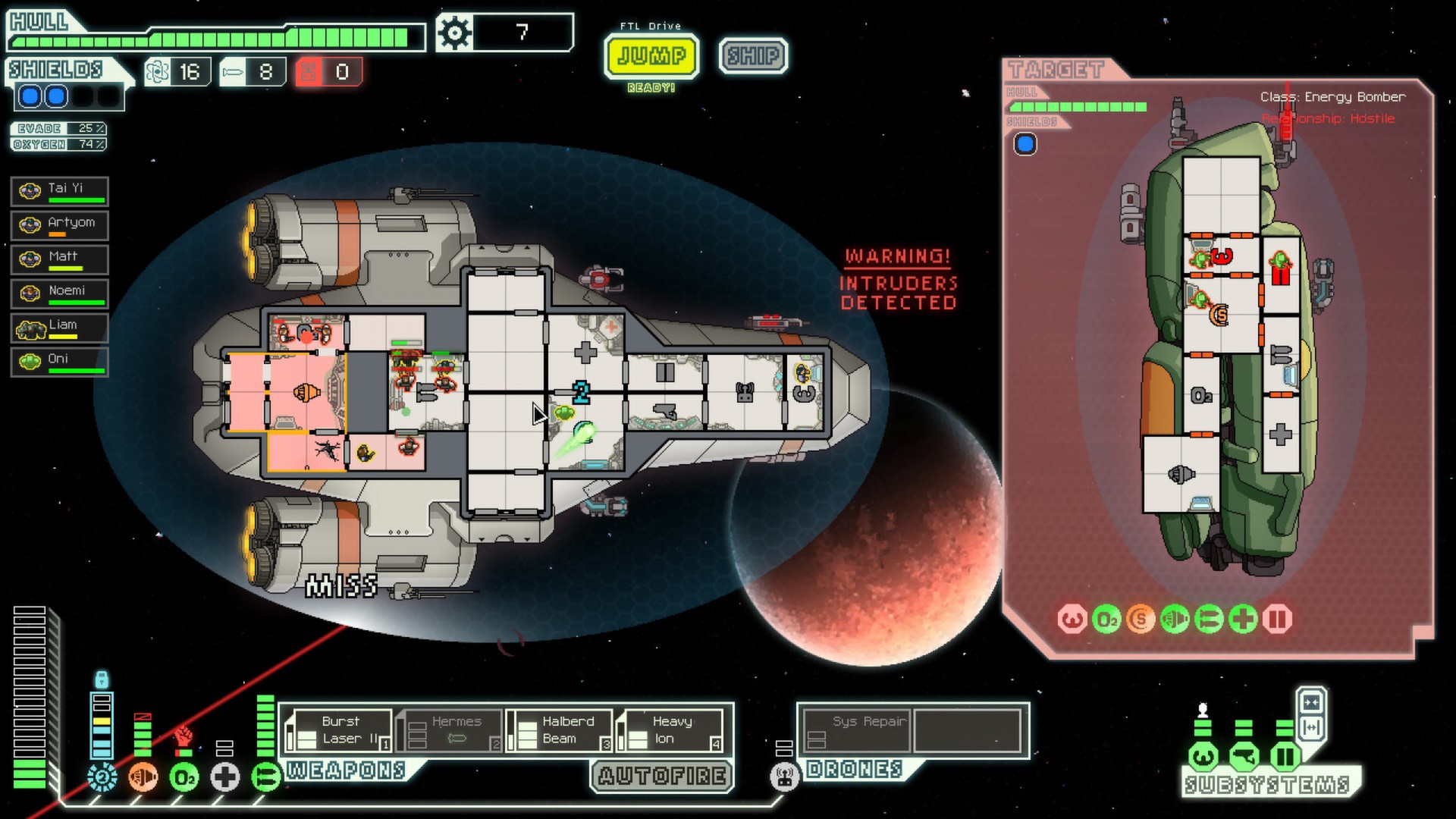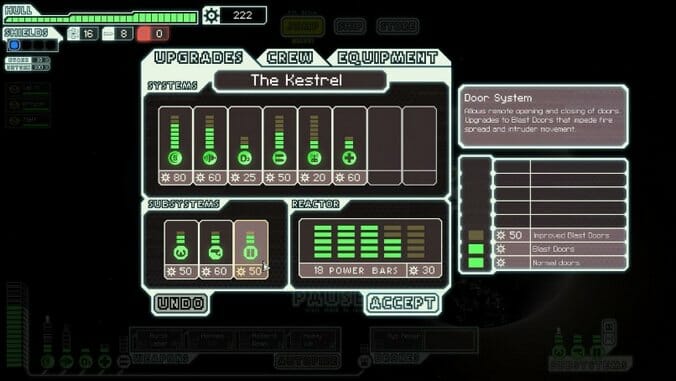“So what’s this FTL game you guys have been raving about?” I asked my friend, attempting a more gentle phrasing of “what’s this thing you won’t shut up about?”
“You remember that Battlestar Galactica episode called ‘33’?” he said. “Where they have to make a faster-than-light jump every 33 minutes, or else they’ll get blown up by the Cylon fleet?”
“Sure, right at the start of the series,” I said. “It sets up the main tension of the show.”
“That’s what FTL is,” my friend replied. “It’s that, in video game form.”
It turns out that’s a pretty accurate assessment. Like the good ship Galactica, your spacecraft in FTL: Faster Than Light jumps from star to star, not necessarily knowing what’s at the other end: an enemy ship, a slaver trap, a free weapon. Your mission is to deliver vital intelligence to the Federation, scavenging what resources you can while remaining one jump ahead of the implacably advancing Rebel fleet. You’re often outmanned, outgunned and under-powered, with constant threats from pirates, aliens, and natural phenomena like solar flares and asteroids. Oh, and if you die, it’s game over.
Yes, FTL is a roguelike, that punishing type of game where death is permanent and random chance kills you just as often as your own bad decisions. But what separates FTL from the rest of the genre is that it constantly presents you with interesting choices. Its simple yet elegant interplay of mechanics rewards both tactical thinking and twitch skill.
No matter which ship load-out you choose—there are several unlockable varieties—your systems are essentially the same: helm, engines, oxygen, weapons, med bay, shields, door control, scanners, and possibly drone control or crew teleporter rooms. In each encounter, you have to decide how best to allocate your limited resources of power and crew members to deal with the situation. Since manning certain rooms boosts power, do you keep one man on shields? Or do you pull him off the console to help repel enemy boarders? Do you try to take down the enemy’s shields first, and then set his oxygen room on fire? Or do you beam over your heavies for some fun with sabotage?

The same interesting decision-making found in combat is applied to the in-game economy as well. Because you’re constantly coping with the ever-diminishing resources of fuel, ammunition, drone parts and scrap (FTL’s currency), exploring each sector of space becomes an equally engaging exercise in cost-benefit analysis. Do you burn the fuel and risk hull damage seeking out the rewards reaped by destroying enemies? Or do you sprint for the exit and hope a few lucky random encounters will net you a new crew member or weapon? Upgrading your ship is critical to your success, particularly in the late game, but is farming a sector worth the risk of being stranded far from the exit as the Rebel fleet draws near? Because FTL has you make so many decisions, it largely avoids creating an antagonistic relationship with the player. In other words, unlike most roguelikes, it doesn’t always seem to be saying “screw you.”
Still, a few minor issues can detract from the experience. The crew avatars are so small that you sometimes end up inadvertently opening a door instead of sending your men to sickbay for lifesaving healing. Similarly, the feedback when systems or crew have sustained critical damage or are unpowered isn’t always clear. (In one run, my crew all perished before I realized the oxygen wasn’t on.) And I wish the economy was a bit more forgiving: although it’s relatively easy to happen upon a merchant in each sector, you often end up hoarding items you don’t need, since you can’t sell fuel, missiles, or drone parts at these locations. But even this limitation forces you back out into the void, like a mother duck nudging her chicks into the water.
The constant tension of adapting your tactics and micromanaging your ship’s crew and systems keeps FTL briskly paced and thoroughly compelling. No matter that the game—which was funded through a massively successful Kickstarter campaign—visually resembles the graph paper it was likely prototyped on. The aesthetics are charming, if functional, including the lovely soundtrack, the gentleness of which provides a nice counterpoint to the constant brow-furrowing of play.
My favorite aspect of FTL, I think, is that it’s a story-generating engine. The many permutations of game-dictated events and your accumulated decisions allow for a rewarding variety of experience. Beating the final boss is almost irrelevant; a quick poll of other players revealed that they beat the game after anywhere from eight to 42(!) hours’ worth of play. But everyone I’ve talked to about FTL, regardless of whether they’ve “beaten” it, has wanted to walk me through their most nail-biting, heartbreaking, or holy-crap-that-was-lucky runs. The light story elements that are present in FTL are a distant shadow of the stories players generate through the game mechanics. That’s what finely-tuned game systems do: They let us author our own experiences.
FTL: Faster Than Light was developed by Subset Games. This review is based on the PC version. It is also available for Mac and Linux.
J.P. Grant is a Boston-based freelance writer whose work has appeared in Kill Screen, Gamers With Jobs, and other outlets. He blogs about games at Infinite Lag and is also on Twitter.

